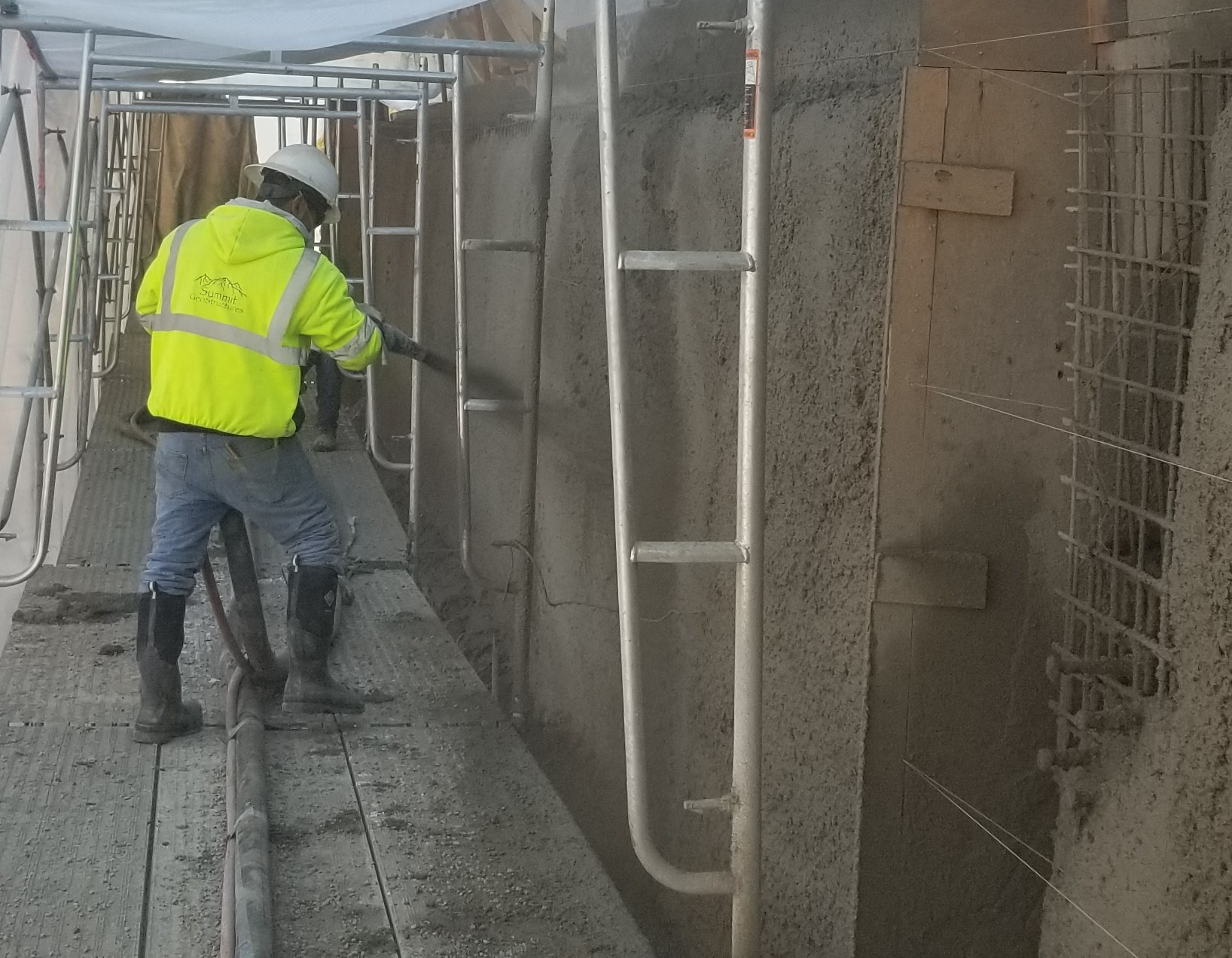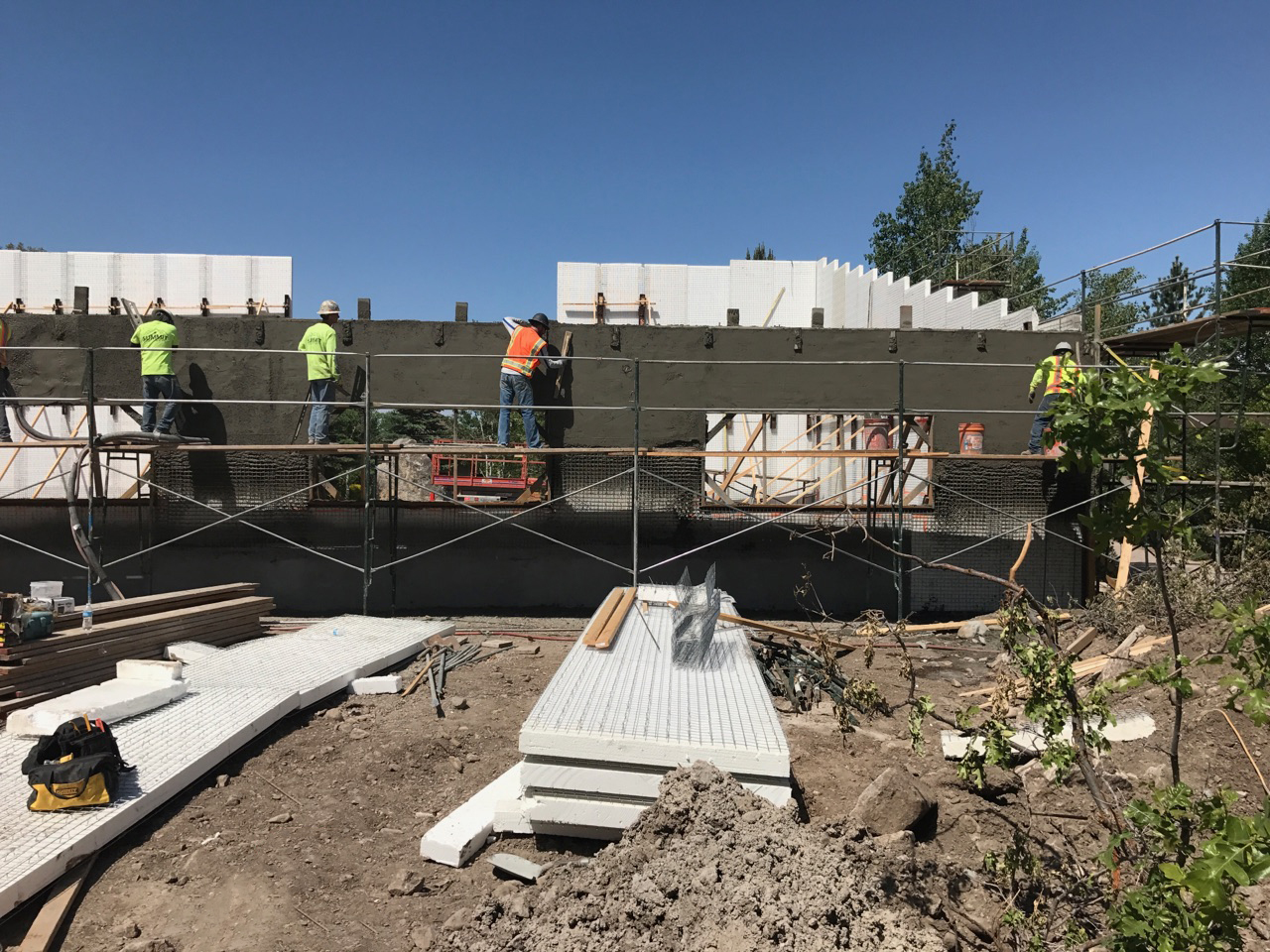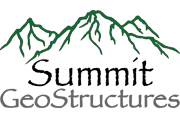Shotcrete Benefits and Applications
When it comes to concrete construction, saving time and money are key to success and profitability. Shotcrete is a proven, cost-effective and time saving alternative to cast-in-place concrete or masonry. Shotcrete can be applied using either a wet mix or dry mix which is also typically termed gunite. Today both the wet and dry mix products can provide similar structural properties so selection of mix type usually comes down to installation factors. The Summit GeoStructures team has experience with both mixes but uses predominatly wet mix shotcrete.
Wet mix shotcrete’s application utilizes compressed air to spray the concrete onto any soil, rock, subgrade, form, existing concrete or brick surface at a high velocity to achieve high density and strength. Let one of our representatives show you how Shotcrete can benefit your next project.
Shotcrete is used instead of conventional concrete, in most instances, for reasons of cost, convenience or both. Shotcrete is especially advantageous in situations when form work is cost prohibitive, time consuming or impractical. Shotcrete also offers the advantage that the finish surface can be installed to match any look desired from a smooth finished wall ready for painting to a creative architectural finish.
If access to the work area is limited, thin layers or variable thicknesses are required, or normal casting techniques cannot be employed, shotcrete becomes a suitable method. Additional savings are possible because shotcrete requires only a small, portable plant for manufacture and placement. Shotcreting operations can often be accomplished in areas of limited access to make repairs to structures.
Sustainability continues to grow as a driving force in the decision-making regarding construction materials and placement strategies. Because shotcrete is simply a method of placing concrete, it offers all of the sustainability benefits of concrete as a building material.

- Formwork quicker and less expensive than for cast-in-place construction
- Complex shapes require limited or no formwork
- Formwork does not require design for concrete pressures
- Schedule savings for new construction and repair applications
- Better bonding to the substrate
- Conducive to difficult to access areas
Learn More:
For a further discussion of the applications and benefits of shotcrete we encourage you to review this publication from the American Shotcrete Association:
Additional information on how your project can benefit from the advantages of shotcrete can be found at their website.

Panel Buildings
The EVG 3D and TriDiPanel Building Systems are proven construction methods utilizing light weight load bearing modular panels with wire truss system combined with structural shotcrete to create a rigid building structure. The modular panels consist of a three dimensional welded wire mesh built around a expanded polystyrene core. The three dimensional mesh creates a high strength wall system once filled in with mortar or shotcrete. The polystyrene core provides superior insulation and soundproofing.
Erection of the panels is efficient for structures with simple geometry and is easy due to their lightweight design and load bearing capacity. Construction does not require cranes because the panels can be handled by hand or small equipment thus reducing erection costs. Panels can be quickly cut to any size or shape to fit the architectural features. No formwork is required as the shotcrete is applied after the panels have been erected allowing the polystyrene to act as a single sided form to stack shotcrete against.
The panel systems offer a stiff structure with rigid joints. Panels are stiff enough to resist bending during concrete installation and require only limited bracing during construction. Installation of utilities is straight forward completed by burning out a small amount of the polystyrene core to provide space for the utilities.
After panels have been erected a minimum thickness of shotcrete is applied to both sides of the panel creating a high strength and monolithic structure. Once the structural layer of shotcrete is placed it can be finished with stucco on the exterior and a plaster on the interior that are applied directly to the shotcrete facing.
Learn More:
Additional information on how the EVG 3D and TriDiPanel systems can be found at the links below.
